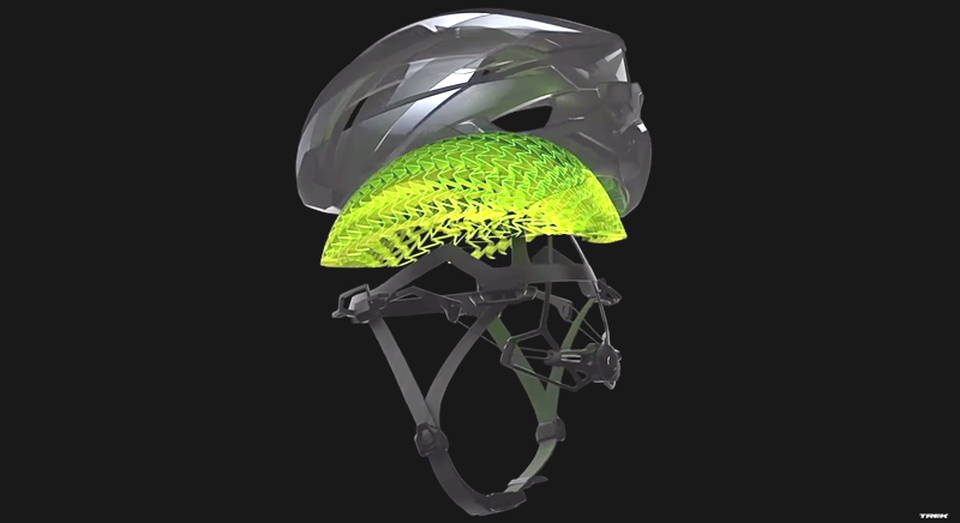Cyclists, rugby players, motorcycle riders and so many other people who take on sports and hobbies that might get them hurt know the importance of having a good quality helmet – they’re meant to protect your brain in case of an impact by dispelling the force that would, without the helmet, go directly to your skull.
In the case of cyclists though, aerodynamics and weight are also very important. While a motorcycle rider’s helmet can hold some serious weight and the rider wouldn’t be really bothered by it much (save for some neck strain), the cyclists are a whole different animal, so to speak – their helmets especially, have to absorb as much of the impact force as possible, all while staying as lightweight as it can.

So far, helmet manufacturers have used expanded polystyrene foam (EPS) for most of their products. The material is made out of a handful of polystyrene bubbles encased in a mesh who rupture on impact and diffuse some of the force.
Unfortunately, studies over the years have shown that EPS doesn’t fully protect the wearers – while they do diffuse some of the impact force, they also place strain on the underlying brain and repeated impacts can cause damage to cognitive functions.
So, how could the helmet manufacturers fix this issue?
Apparently an engineer at Trek Bikes discovered WaveCel, a lightweight material that can evenly distribute the forces that an impact to the head can cause. It’s made out of polymer that, once folded, allows the cells around it to fall over each other, which provides extra resistance even after the entire structure collapses.
The WaveCel mesh floats within the helmet, unlike the traditional EPS, which is attached to the inside of it. By floating within it, it can absorb the force of any other off-axis impacts, which happen to be the most common impacts cyclists have to deal with, since they almost always involve them falling at an angle.
WaveCel was created by orthopredic surgeon Steve Madey and biomedical engineer Michael Bottland who have said that even when the mesh was placed directly on the skin, the fabric still kept it well protected on impact.
Unfortunately, the helmet is about 53 grams heavier than your standard helmet, though it’s worth noting that the cells in the material are mostly made out of air, so airflow and heat transfer are not bad at all.
The helmets are currently being sold under the Trek brand Bontrager and range from $149,99 to $299 for road and mountain bikes, with a commuter version also available.
Follow TechTheLead on Google News to get the news first.





























